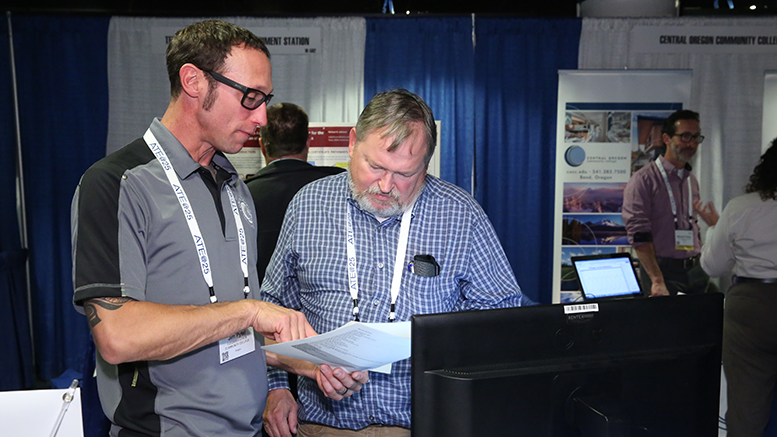As F. Fleming Crim, chief operating officer at the National Science Foundation, pointed out Wednesday night, the Advanced Technological Education (ATE) program is “having a moment because it is so important to the nation.”
The National Science Board’s Task Force on the Skilled Technical Workforce is holding a listening session at the 2018 ATE Principal Investigators Conference this week in Washington, D.C., and V. Celeste Carter, lead ATE program director at NSF, recently attended a National Council for the American Worker meeting with Crim at the White House.
Community college educators who have leadership roles in ATE projects and centers are being asked for their insights because NSF data indicate that one million U.S. jobs will go unfilled in the near future due to a lack of people with the skills to work with emerging technologies.
Wide-ranging impact
Since 1993, NSF has invested more than $1 billion in faculty-driven ATE experiments to improve technicians’ education and the preparation of STEM educators. Because ATE initiatives must involve partnerships with industry and frequently involve collaborations across education sectors, the discoveries of ATE principal investigators have influenced classroom instruction and workplace outcomes throughout the nation.
“You have helped us learn the strategies that work to reach students and educate them to be work-ready on the first day of their jobs,” Crim said.
George Boggs, emeritus president of the American Association of Community Colleges (AACC), also thanked the educators and industry partners for making the ATE program so successful during the past 25 years.
He praised the “visionary policy makers” who advocated for the legislation that became the Scientific and Advanced Technology Act of 1992, and the NSF leaders who launched the ATE program in 1993 in response to it. Twelve current and former NSF program officers whose responsibilities have included working with ATE principal investigators were introduced to enthusiastic applause.
“The ATE program has transformed the education of technicians in our country… [and] created a culture that supports, strengthens and sustains STEM technician education programs, and grows and nurtures STEM leaders,” Boggs said.
Boggs also congratulated the 62 students who will share what they learned in ATE-funded programs during a poster session. They are among the 900 people attending the conference — the largest in the ATE program’s history — that AACC hosts each year with support from NSF.
Crim thanked AACC for partnering with NSF on the ATE program and the Community College Innovation Challenge, which he called “a remarkable activity that shows creative possibilities that happen when we commit to support STEM education across the spectrum.”
Related ATE conference stories: Former NASA researcher Christine Darden recalls when she asked her boss why women at the agency with equal qualification as men were passed over for research jobs.

